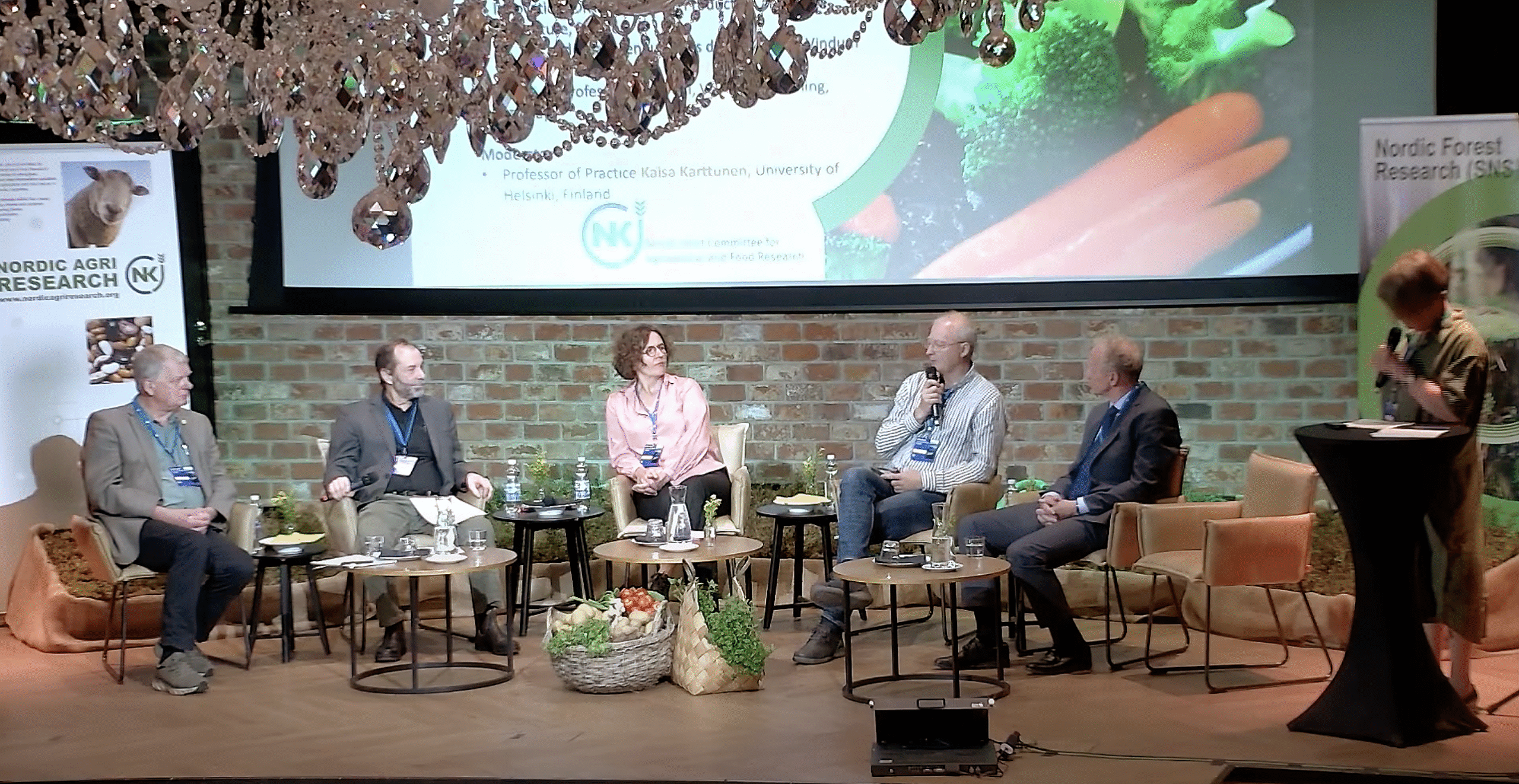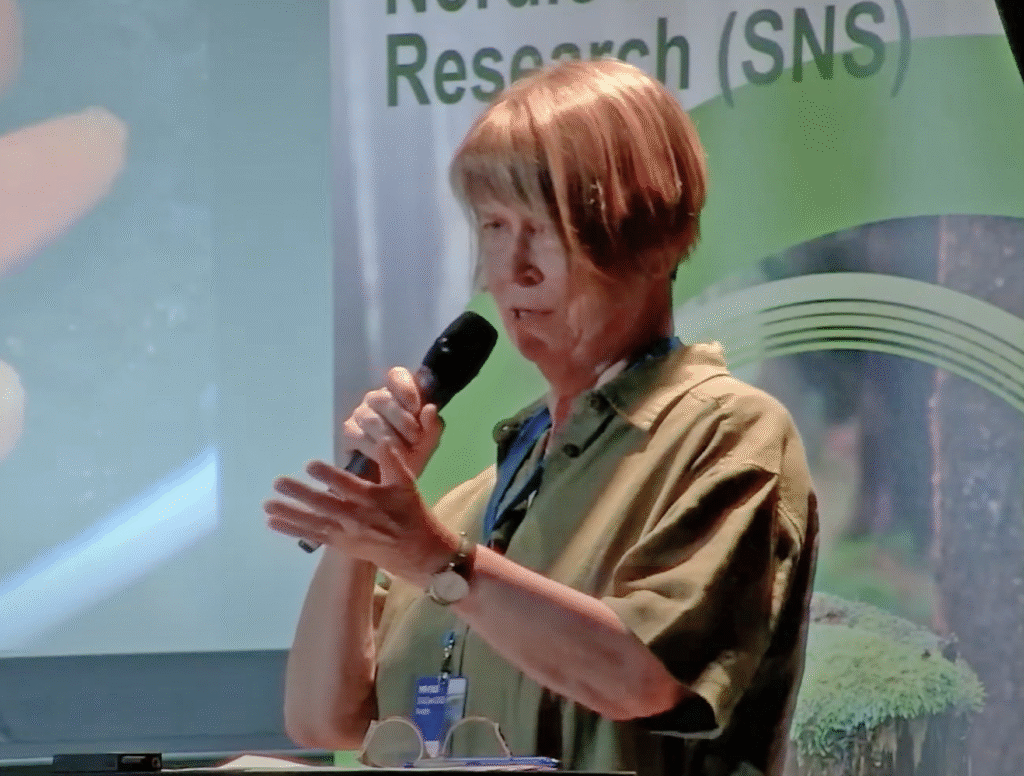To celebrate NKJ’s 60th anniversary, we organised a panel discussion to highlight the connection between research, policy and practice. One conclusion was that dialogue between researchers, decision-makers and farmers needs to improve, and for that to happen, arenas are needed.

During the 60 years that NKJ has existed, our main task has been to create such arenas, not least by funding networks where researchers can meet and also meet various stakeholders. We also work on building bridges between research and decision-makers through our advisory role towards Nordic Council of Ministers.
 – The panelists highlighted the importance of this networking between the Nordic research institutions, where NKJ and SNS can be the initiator, says Kaisa Karttunen, professor of practice at the University of Helsinki and moderator of the panel discussion.
– The panelists highlighted the importance of this networking between the Nordic research institutions, where NKJ and SNS can be the initiator, says Kaisa Karttunen, professor of practice at the University of Helsinki and moderator of the panel discussion.
The discussion on how research should reach decision-makers, and how we should formulate research results so that it becomes appealing and useful for decision-makers and practitioners, is an old one.
– Obviously it’s not yet smooth. The policy planners and the decision makers don’t think they get new knowledge in a way that is useful for them, and the researchers on the other hand have the feeling that they don’t get heard and the their results are not put into practice. There obviously are problems there!
The panelists emphasised that dialogue is the solution to the problem, and they also wanted to reach out to the farmers. The farmers in the panel also wished to be part of the dialogue.
– The researchers need to be informed about what the problems are, so they can direct the research towards the right end. But the different needs don’t meet, says Kaisa Karttunen after listening to the panelists.
The panelists suggested that there should be special institutions for enabling discussions between the different parties, to identify the research questions, and to talk about financing and prioritizations. But there would also be a need for more informal arenas for meetings where participants could discuss, for example, research results.
– Not all researchers have to be excellent communicators, but there is a need for people who specialise in presenting research results to policy planners.
But why is the gap so wide? Why is it so difficult to find functioning paths for researchers and policy planners and decision makers to find each other?
– The amount of new knowledge is so huge! And of course, every researcher thinks that their results are the most important. But the policy planner has specific needs, and there is a big gap there. It is also about packaging the knowledge so that it is easy to digest for those who are supposed to receive it.
It is also important that research is free and not governed by the opinions or interests of various stakeholders. The panel believed that researchers will manage this, it is their profession to maintain independence.
– There is of course some cherry picking, says Kaisa Karttunen.
– Policy makers may need education so they know how to use the research results. They also have a responsibility to remain open and not do this cherry picking.
With the discussion, we were able to highlight how important it is to have arenas where different stakeholders can meet, express their needs and discuss their conditions.
– There is still some work to be done!

